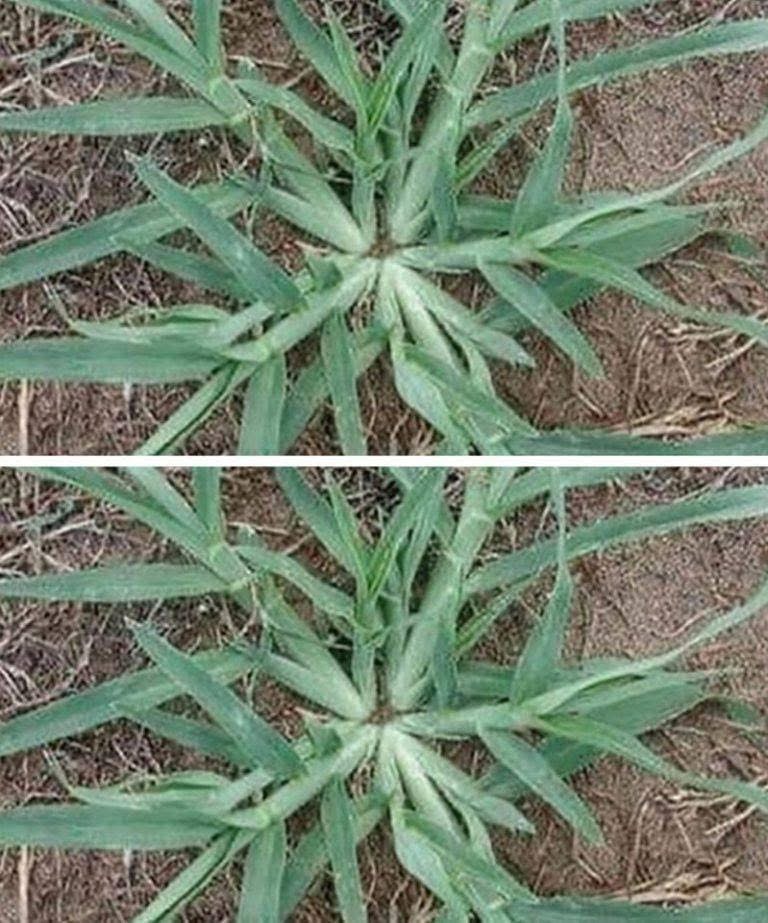The Garden Guardian Why You Should Never Uproot Purslane

Introduction
Often dismissed as a common weed, purslane (Portulaca oleracea) is in fact a nutritional powerhouse and culinary gem. With its succulent, lemony leaves and crunchy stems, it not only adds flavor and texture to dishes but also brings immense health benefits to your plate. In ancient times, it was revered for its healing properties, and in modern kitchens, it’s making a vibrant comeback.
Today, we celebrate this humble hero with a refreshing recipe that showcases its versatility, its cultural richness, and the reason it deserves a permanent spot in your garden—and on your table.
Recipe Name:
Purslane & Chickpea Summer Salad with Lemon-Tahini Dressing
Ingredients:
For the Salad:
- 2 cups fresh purslane (washed and chopped, tender stems included)
- 1 cup cooked chickpeas (or canned, drained and rinsed)
- 1 small red onion (thinly sliced)
- 1 medium cucumber (diced)
- 1 medium tomato (chopped)
- ¼ cup fresh parsley (chopped)
- ¼ cup feta cheese (crumbled, optional)
For the Lemon-Tahini Dressing:
- 2 tbsp tahini
- 2 tbsp olive oil
- 1 lemon (juiced)
- 1 garlic clove (minced)
- 1 tsp ground cumin
- Salt and pepper to taste
- Water to thin (1–2 tbsp, as needed)
Instructions:
- Prepare the dressing:
In a small bowl, whisk together tahini, lemon juice, olive oil, minced garlic, cumin, salt, and pepper. Add water gradually to reach your desired consistency. - Combine the vegetables:
In a large mixing bowl, toss together purslane, chickpeas, cucumber, tomato, red onion, and parsley. - Dress the salad:
Pour the dressing over the salad and toss gently to combine. Let sit for 5–10 minutes to allow flavors to meld. - Serve:
Top with crumbled feta if desired. Serve cold or at room temperature.
Method:
This is a no-cook, plant-forward dish that utilizes the crisp texture of raw purslane. The goal is to highlight the natural brightness of the ingredients with a creamy, tangy tahini-based dressing that complements the slight tartness of purslane.
History of Purslane:
Purslane is not new to the scene. It has a long and fascinating history:
- Ancient Greeks and Romans cultivated it for its medicinal properties and flavor.
- In Ayurveda, it’s used to cool the body and treat inflammation.
- Indigenous peoples of the Americas valued it as both food and medicine.
- It was mentioned by Pliny the Elder and was a staple in the Middle Eastern and Mediterranean diets long before it became a ‘weed’ in Western gardens.
Benefits of Purslane:
- Omega-3 Fatty Acids: Highest among leafy greens.
- Antioxidants: Contains vitamins A, C, and E.
- Minerals: Rich in magnesium, potassium, and iron.
- Anti-inflammatory: Traditional use in reducing skin and gut inflammation.
- Hydration: High water content makes it excellent for summer recipes.
-
Formation (Botanical Insights):
- Botanical Name: Portulaca oleracea
- Family: Portulacaceae
- Growth Habit: Low-growing succulent with reddish stems and oval leaves.
- Resilience: Thrives in poor soil, drought-tolerant, and self-seeding.
- Edibility: Leaves, stems, and even flowers are edible.
- Flavor: Citrusy, slightly peppery, with a crisp bite.
Conclusion:
Rather than pulling out purslane like a pesky weed, recognize its incredible potential. It’s sustainable, self-reliant, nutrient-dense, and delicious. Integrating it into your meals is a step toward ecological eating, connecting us to traditional foodways and the bounty of nature.
Lovers of Purslane*:
- Chefs: World-renowned chefs like René Redzepi and Alice Waters feature purslane in high-end dishes.
- Foragers: Urban and wild foragers treasure it as an easy, prolific find.
- Nutritionists: Applaud its rare plant-based omega-3 content.
- Gardeners: Value it as a soil protector and ground cover.
- Cultures: Turkish (semizotu), Mexican (verdolagas), Greek (andrakla), Indian cuisines celebrate it in traditional dishes.
Nutrition (Per Serving):
- Calories: ~220
- Protein: 8g
- Fat: 14g
- Carbohydrates: 16g
- Fiber: 5g
- Omega-3 ALA: ~400 mg
- Vitamin A: 35% DV
- Vitamin C: 25% DV
- Iron: 15% DV
Conclusion (Revisited):
In a world leaning toward regenerative, mindful food practices, purslane is no longer the underdog—it’s the comeback plant of the decade. Don’t uproot it—honor it. Let it flourish, and let your health and taste buds reap the benefits.
Lovers (Encore):
This plant is adored not just by culinary elites, but by:
- Vegans and Vegetarians: As a natural source of essential fats.
- Sustainable eaters: Who favor low-impact, high-return plants.
- Health-conscious families: Seeking flavorful, whole-food options.
- You, once you’ve tried this recipe
Would you like a printable version of this? Or maybe a version adapted for kids, batch cooking, or meal prepping?